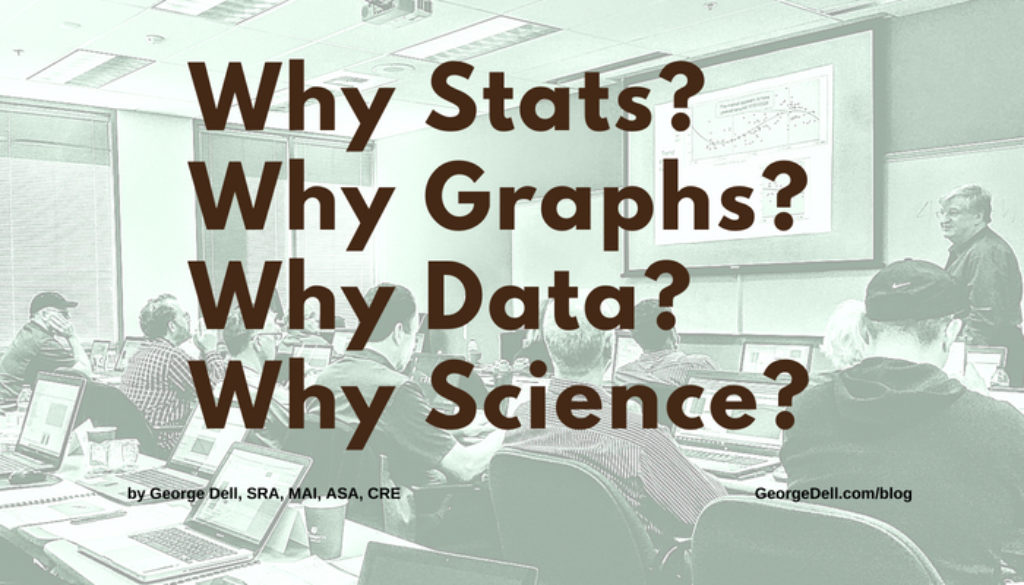Why Stats, Why Graphs, Why Data, Why Science? (Part VI of VI) How is this stuff different from the established classical, traditional appraisal “process”? Is this technology or a new theory?
Are data, and science somehow better? Or is it just mumbo-jumbo to look impressive? Is there something wrong with traditional appraisal theory? The traditional emphasis on three approaches continues to align with the way valuation problems arrive, and what data is available to solve it. What has changed is technology. This includes hardware, computation, software, and brain-machine interface. What is missing is a profession that focuses on what appraisers have always done well – but taking advantage of what can be done.
We hear these things:
- “Computers will never replace the appraiser.”
- “The end is near. The appraisal profession is dying.”
My opinion? Both are wrong. Yes, both are wrong.
- Computers sharpen appraiser judgment.
- The profession itself will change, (or be replaced).
Appraisers can blame the technology – or embrace it! Who will take advantage of the opportunity? The appraisal profession – or someone else? I say appraisers have the best and highest set of competencies in markets, in identifying valuation problems, and in the ability to understand and implement the needed modeling skills.
The ability to do instantaneous statistics is here. The ability to create instantaneous graphs is here. Instantaneous data is here, (and we don’t need to take samples). And the science of data is here. What appraisers do need to learn is analytics software. Canned commercial software will not do it. The accountant’s spreadsheet, will not do it. These simply to not encourage and enable the modeling skills so necessary. The modeling skills require subject matter expertise. This expertise is best provided by experienced appraisers – armed with a new and friendly computer competence.
Data science is a new field, perhaps less than 15 years old. Yet there are graduate level degrees offered all over the world. Today it is considered the hottest new field for employment. The difference between data science and statistics, is that data science recognizes and requires a subject matter expert (the appraiser?).
Summary statistics enable the human brain to understand and analyze sets of data. Plots and visuals expand this human strength. These allow the human brain to do what it does so well: generalize, formulate questions, try alternate solutions, and interface with the algorithmic computer power in an instant. Quickly and clearly. Easily and understandably.
To understand data, the practitioner must understand data types, data levels, and how computers deal with data. The practitioner must understand how to transform (convert) data from one level to another. And must understand how to model and deal with the tradeoff between data loss and comprehension.
The future is bright for those competent in modeling – using stats, graphs, and the art of data science. Will it be appraisers? Or will it be practitioners called by a different name?
